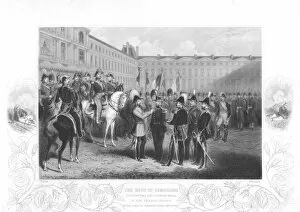1819 1904 Collection
"1819-1904: A Legacy of Art, Soldiers, and Orchids" In the span of 85 years, from 1819 to 1904, several remarkable individuals left their mark on history
All Professionally Made to Order for Quick Shipping
"1819-1904: A Legacy of Art, Soldiers, and Orchids" In the span of 85 years, from 1819 to 1904, several remarkable individuals left their mark on history. One such figure was George William Frederick Charles (1819-1904), the second Duke of Cambridge and a distinguished English soldier. Known for his military prowess and leadership, he played a significant role in shaping British history. Meanwhile, across the Atlantic Ocean in America, another individual named Martin Johnson Heade (1819-1904) emerged as a prominent artist during this era. His masterful brushstrokes captured breathtaking landscapes like "High Tide on the Marshes" (1872) and "Point Judith, Rhode Island" (1867-1868). But it was his delicate portrayal of nature's beauty in works like "Orchid Blossoms" (1873) and "Apple Blossoms" (1873) that truly showcased his artistic brilliance. Paul Henrion also made an impact during this period as a composer. Born in 1819 and passing away in 1904, Henrion's musical compositions resonated with audiences throughout his lifetime. These diverse talents - soldiers defending nations' honor; artists capturing nature's essence; composers evoking emotions through melodies - all contributed to the rich tapestry of human creativity during these years. Whether it was George William Frederick Charles leading troops into battle or Martin Johnson Heade immortalizing picturesque scenes on canvas or Paul Henrion composing symphonies that stirred hearts – each one left an indelible legacy. As we reflect upon this period from 1819 to 1904, we are reminded of the power art holds to transcend time and borders, and is through their contributions that we can appreciate both the beauty found within our natural surroundings and the courage displayed by those who fought for what they believed in.











